Fact Check: Trump’s Fiction, Clinton’s Spin
A lengthy fact check by The Associated Press shows that while Hillary Clinton's acceptance speech on Thursday night contained minor inaccuracies, Trump’s speech on the same day was full of numbers and assertions that were wholly incorrect. A lengthy fact check by The Associated Press shows that while Hillary Clinton's acceptance speech on Thursday night contained minor inaccuracies, Trump’s speech on the same day was full of numbers and assertions that were wholly incorrect.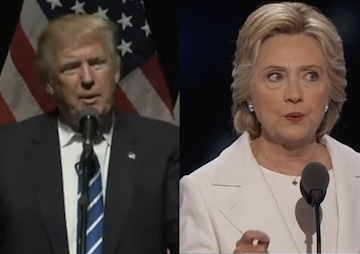 Donald Trump and Hillary Clinton both gave speeches on Thursday. (Screen shots via WQAD / YouTube)
Donald Trump and Hillary Clinton both gave speeches on Thursday. (Screen shots via WQAD / YouTube)
Donald Trump and Hillary Clinton both gave speeches on Thursday. (Screen shots via WQAD / YouTube)
As the Democratic National Convention wrapped up its final day with Hillary Clinton’s history-making acceptance speech, Donald Trump also took the spotlight by giving a controversial speech on the Iran nuclear deal. Eyes around the nation were on both candidates, but which one gave a more authentic speech?
Luckily, the AP has some answers. Christopher S. Rugaber and Bradley Klapper broke down the inaccuracies and twists in both speeches. The result? Although Clinton “brings plenty of policy detail when stacked against the broad-brush ideas of her Republican rival, in some cases there’s less than meets the eye to what she says she will do.”
For instance:
CLINTON: “We will not ban a religion.”
THE FACTS: Trump never proposed banning Islam in the U.S., as Clinton seems to suggest. He proposed a freeze on the entry of all foreign Muslims into the U.S., then adapted the idea with several iterations. …
CLINTON, on taxing the wealthy and corporations: “Because when more than 90 percent of the gains have gone to the top 1 percent, that’s where the money is.”
THE FACTS: While vague, Clinton’s claim probably relies on outdated figures and exaggerates inequality.
Meanwhile, Trump’s speech, given at an Iowa rally earlier that day, “was more fiction than fact,” as the AP found that many of the numerical figures and policy statements he mentioned were wrong.
Here are some examples:
TRUMP: “We pick up 73 percent of the cost of NATO. We’re paying to protect them. Wouldn’t it be nice if people would pay, and we could do things properly? … That’s got to change.”
THE FACTS: No, the U.S. picks up just over 22 percent of the cost of NATO operations, based on last year’s figures. Trump’s figure of 73 percent is based on the U.S. share of overall military spending by NATO member countries, not of the money devoted to the alliance. …
TRUMP: “We’re right now the highest-taxed nation in the world.” He acknowledged his numerous past assertions of this have been questioned, and added, “OK, we’re one of the highest taxed.”
THE FACTS: Closer, but still wrong. The U.S. tax burden is actually one of the lowest among the 34 developed and large emerging-market economies that make up the Organization for Economic Cooperation and Development. …
TRUMP: “Religion’s voice has been taken away. It was taken away by Lyndon Johnson in the 1970s because of a dispute he had, I think, with the church. And this was his way of silencing the church.”
THE FACTS: Trump was two decades off on the timing, and stretching in saying religion’s voice in politics was silenced by LBJ. Churches still have a loud political voice.
Although it’s clear Clinton’s acceptance speech had a political spin meant to appeal to supporters of Bernie Sanders, many components of her speech lacked details or mirrored “what the U.S. is already trying to do.”
Aspects of Trump’s speech were not only false but also excessively violent. Responding to the leak of Democratic National Committee emails earlier this week, which contained anti-Trump language, Trump said he’d like to “hit a number of those speakers so hard, their heads would spin. … They’d never recover.” Additionally, the AP analyzed Trump’s own acceptance speech from one week ago. It found that his “fierce denunciation” of Clinton was “rife with distortion.”
Unfortunately, many American voters don’t seem to care about candidates’ truthfulness, which may explain why many of Trump’s clear inaccuracies don’t seem to hurt him in the polls. Voters “don’t care” what Trump is saying, “it’s just how he’s saying it.”
Meanwhile, polls have found that many voters are extremely distrustful of Clinton: 67 percent found her untrustworthy while 56 percent distrust Trump. PolitiFact rates 23 percent of her claims as “true” and 29 percent as “mostly true.” Compare that to Bernie Sanders, who gets a 13 percent for “true” statements.
As for Donald Trump? PolitiFact found that only 4 percent of his statements were true, 37 percent of his claims were “false,” and 17 percent were labeled “pants on fire.”
This, of course, is now the Democratic Party’s biggest challenge: Convince voters that Clinton is trustworthy. Based on the results of polls so far, it seems Democrats have their work cut out for them.
You can read the full AP fact check of the candidates’ Thursday speeches here.
—Posted by Emma Niles
Your support matters…Independent journalism is under threat and overshadowed by heavily funded mainstream media.
You can help level the playing field. Become a member.
Your tax-deductible contribution keeps us digging beneath the headlines to give you thought-provoking, investigative reporting and analysis that unearths what's really happening- without compromise.
Give today to support our courageous, independent journalists.

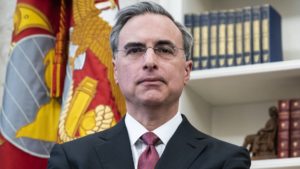
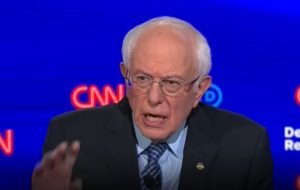

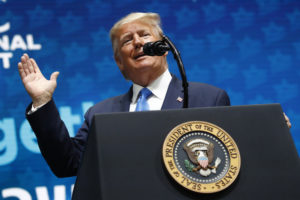
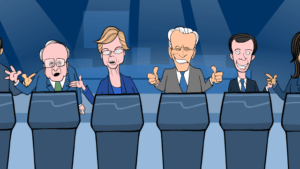


You need to be a supporter to comment.
There are currently no responses to this article.
Be the first to respond.